Understanding the CAGED system might not be at all obvious if you don't start learning it in its basic form. This is a series of charts designed to help you see 5 fundamental CAGED chords (which you already know) and how they interconnect across the guitar fretboard to create what's known as the CAGED system.
These diagrams do not seek to cover 100% of the system because their intent is different—they are simplified versions so that you could really see the concept clearly—how 5 simple open chords form the basis of the entire CAGED system and eventually "unlock" the fretboard for you.
Once you get past this stage of familiarizing yourself with the basics I recommend you move on to the A-Minor pentatonic CAGED shapes which add the next layer of complexity (while still remaining easy to play and remember) and level you up in mastering the CAGED system.
In this series, one of the diagrams makes familiar chords appear prominently. Here the chords are intentionally highlighted the way you normally play them as open chords to help you recognize them.
Another diagram takes you a step further and shows the same chords in the context of their surrounding pentatonic scales—this aims to show you why a particular CAGED pattern is named after the shape of a specific open chord; the only difference with the full scale version is that the full scale has a few more notes to the patterns (7 instead of 5), but I've chosen pentatonic scales precisely because of a better clarity.
And yet another diagram shows you that these open chords are, in fact, movable and highlights where they overlap. You'll also learn from this chart that all 5 shapes give you exactly the same chord despite their names, shapes and positions—that's an insight you need to realize early on. It might twist your mind just a bit, but nothing complicated there. For example, if we move all 5 shapes simultaneously to the right by just 1 fret, the shape names will remain the same, but the chord they will produce will be C# for each and every shape. Hopefully that makes sense.
These might be the most important charts that you need to see when you start learning the CAGED system, because if you randomly look at a single pattern of notes which is labeled as, say, "G-Shape", you might not have any clue what's the relationship between a "G-Shape" and the pattern that you're looking at, because it's just not obvious if you're unprepared. And it's even more convoluted with the minor versions of the CAGED shapes (outside of scope of these diagrams).
But the idea here is that the chord tones of each of these 5 core open chords serve as a solid foundation, like an unmovable frame to which the remaining notes of the scale are attached. This is also one of the main characteristics of this system—you know where each chord or scale degree is located relative to this solid frame. To clarify, the "frame" itself is movable (which is also the characteristic of the CAGED system) but the notes within the single frame are fixed. This is extremely important and beneficial.
For example, if you know where the 7th degree is located (and you do know, because the foundation is fixed) then you can choose to alter this scale degree to your liking, e.g., lower it by one half-step, and you'll get a Mixolydian scale (remember that the prime form of all CAGED shapes is the Major scale, hence that's what you effectively alter).

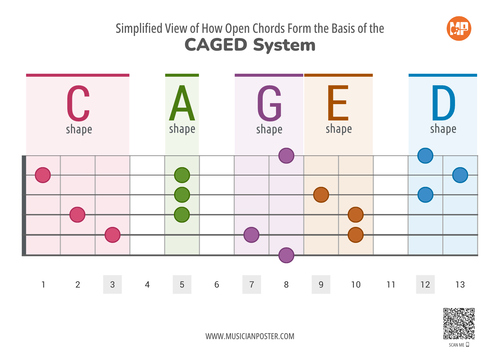
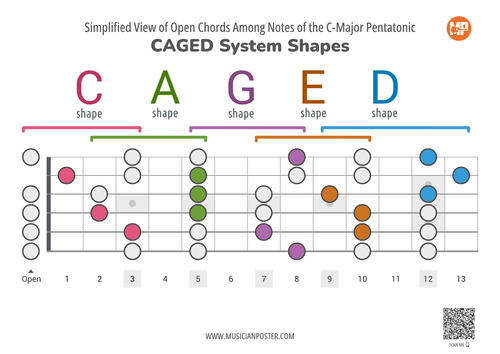
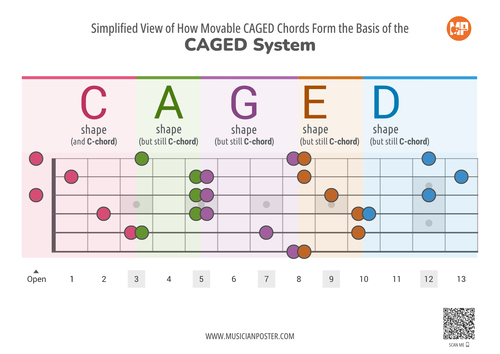
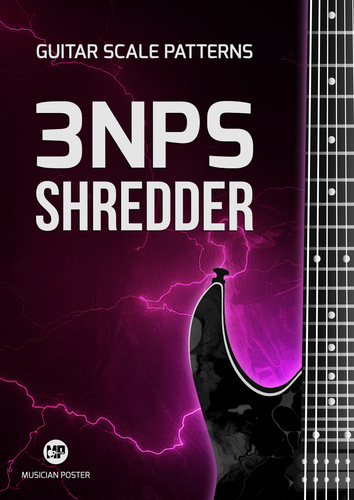

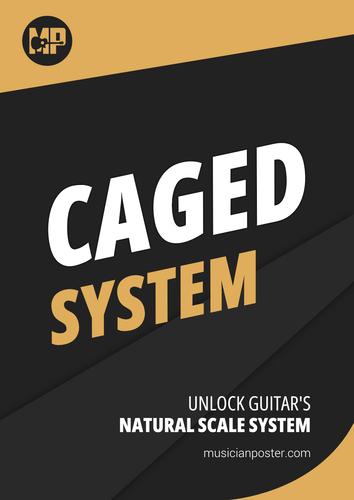









0 Comments